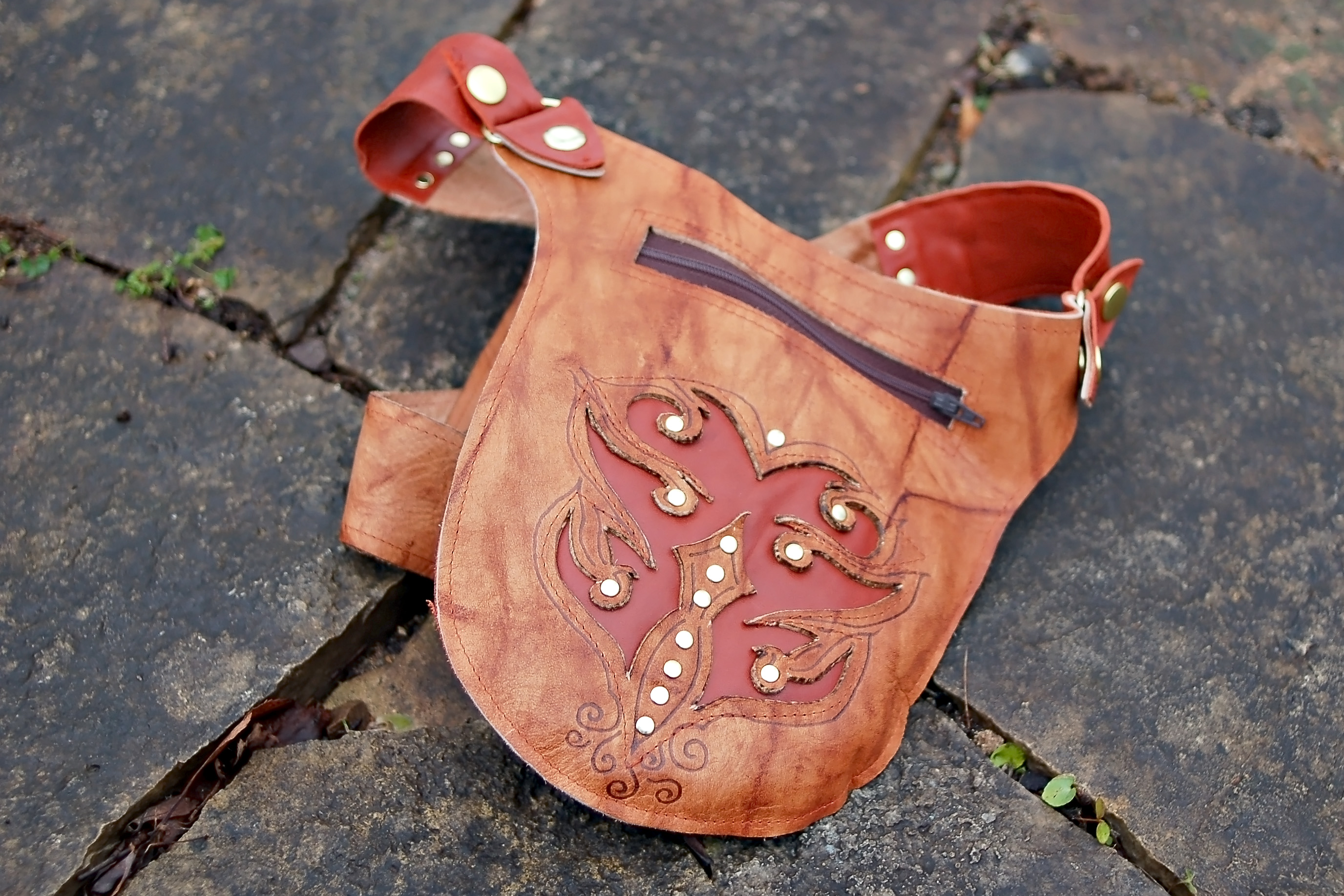This is a blog post I did for the Sewing Pattern Testers blog. It was edited a bit and she is new at blogging, so didn’t get how to put the html into the post. I am sure she will get better in time. So…here is the complete post with pictures and links!
******
Hello all! My name is Stacy, and I blog over at Stylin’ Stacy. I have been sewing for over 30 years, and am over-run with projects constantly!
I am by no means an expert on sewing with leather, but I do have a few years’ worth of experience under my belt. Here is a compilation of sewing tips and things to look for when sewing with leather.
#1 – Leather Selection
Different animals produce different kinds of leather products. Tandy Leather has a detailed explanation of weights and terminology.
Here are some basics that I have learned.
Lambskin – This is the softest and thinnest leather that you will find in commercial outlets. It is a common leather product and is generally dyed different colors and may have some embossing (a pattern stamped into the leather). The hides are generally small, so don’t expect to get a lot out of one hide. Lambskin is popular for making apparel due to its soft and pliable nature. It is also easier to sew with it due to the thickness.
Pigskin – Soft, relatively thin, and a little larger hide than a lambskin. You can feasibly get a purse out of hide. This also gets dyed many different colors and gets embossed.
That green wants to be a Green Bay Packers purse…I can tell. 😉

Deerskin – Very soft and large hide. These tend to be pretty spendy due to the hide size, durability and softness. These are generally found in more natural colors and black.

Cowhide – This is the thickest you will find. It also comes in varying thicknesses, from ones you can sew on the machine to ones too thick to sew on a standard machine. It is the most durable, but also hardest to sew. Some of the more processed hides can be made fairly soft, but the thickness will make it harder to sew.
#2 – Sewing Machine use
By and large if you are sewing with the thinner leathers (Lambskin, Pigskin and some Deer hides) you won’t have a problem with your home machine. If your machine has a hard time sewing denim, then you may want to look for a more durable machine.
I purchased a Singer 401A vintage machine for the heavier projects, since after sewing a thick cowhide purse I needed to repair the timing on my machine.

A few things to make sewing with leather easier is a Teflon foot and a Leather Needle. I have heard good things about having a walking foot, as well. I don’t have one, so can’t give out personal experience on that.
Suede will glide easier under the pressure foot, but the stickier leathers will have a hard time consistently going under. If you don’t want to buy a teflon or walking foot, or are still having issues, add a layer of tissue paper over the leather. This will help it glide over, and just carefully tear it off the seam afterwards.
You may also need to decrease the presser foot pressure. See your manual for how to do that.
I use normal weight thread when sewing with leather. If you have a spot that will have a lot of stress, I would recommend sewing with upholstery thread. It is thicker, and may require some tension adjustment, but it is really hard to break.
Keep the stitching length long, to lessen the holes in the leather and likelihood of tearing. On my Janome I use a stitch length of 3-4.
#3 – Sewing with leather
Some random tips…
– You can iron leather, but turn off the steam. The water releasing onto the leather can stain it. I also use a press cloth to make sure my iron doesn’t stick to the leather.

– Use a hammer or mallet to pound down seams. Some seams get pretty bulky, so use your hammer to get them flatter and easier to go under the presser foot.
– Don’t use pins. Instead of pins, use Clover Clips or paper clips to hold in place. The pins will puncture holes in the leather.
– Glue is your friend. Not being able to use pins can put you in a bind in some places. I use a glue stick to hold it in place for stitching, or I also use Wondertape.

– Leather will stretch. This is something to keep in mind for bag handles. You can use interfacing (including iron-on interfacing) to keep them from stretching out too much. I have also sewn twill tape or ribbon in between layers to keep things in place.

– You can wash leather, but some take to it better than others. I would suggest using a color catcher in the wash the first few times to make sure the dye doesn’t bleed onto other garments. The leather will lose some of its softness. If you make a leather jacket, skirt or bag, I would suggest dry cleaning those. If it is just an accent on clothes, like a collar or elbow patches, I throw it in the wash on cold and hang to dry.

– The lighter leather colors are predisposed to staining, so you might want to seal it. Don’t wear a new pair of blue jeans with your natural colored leather purse. Ask me how I know?

– Unless you are interested in tooling leather, stay away for the vegetable tanned leather hides. These are usually heavier weight to account for the tooling/stamping that happens with these unfinished hides. They are fairly hard, too, and not good for garments. They can work for purses, but will likely require hand-stitching. Tooling leather is a whole other animal from sewing bags and garments.

– If you are using rivets or studs for the leather, be aware that they come in different thicknesses. You want a shorter shaft on anything you will be putting on thinner leathers. Otherwise, when you go to pound it down, there will be too much room and it will go offset.

– Sometimes you will just have to hand-sew the leather if it is too thick. Sewing machines for specifically sewing leather are very expensive, so unless you plan on doing it often, have some extra room and a spare $1K+ you may have to bust out the leather sewing needle and thimble (you will need a thimble, trust me). If you do go this route, I recommend getting this, this and this.

That is all I can think of to tell you right now, but feel free to ask questions! I will try to answer if I can.





Comments are closed.